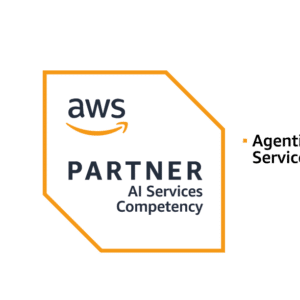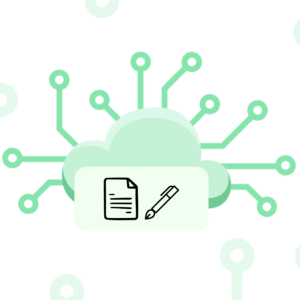
Are you still managing your server infrastructure? Is your development team burdened with complex back-end code? It’s time to explore a revolutionary approach: serverless computing. But what exactly are the benefits of serverless architecture? And why are organizations worldwide embracing this transformative technology?
In this article, we will uncover the hidden advantages of serverless computing that go beyond the expected cost efficiency and scalability. We will delve into the operational efficiency it offers, the simplified back-end code development, and the vibrant ecosystem and community surrounding it. Get ready to challenge your beliefs and expand your understanding of serverless computing.
Key Takeaways
- Serverless computing provides cost efficiency by enabling pay-per-use model.
- Operational efficiency is improved as developers can focus on building application features.
- Automatic scalability ensures consistent performance for variable workloads.
- Simplified back-end code development leads to better quality and more innovative features.
- The vibrant ecosystem and community surrounding serverless computing offer a range of integrated services for building feature-rich applications.
What is Serverless Computing?
In the world of web development, serverless computing has emerged as a game-changing approach that allows developers to focus on the front-end of a website or app without the burden of managing back-end functions. At its core, serverless architecture revolves around the concept of back-end functions, which are separate pieces of code that remain idle until triggered by an event. This event-driven model enables developers to build scalable applications in a more efficient and cost-effective manner.
Defining the Serverless Model
In a serverless computing environment, developers no longer need to provision and manage servers or worry about scaling their infrastructure to accommodate growing workloads. Instead, they can rely on a function as a service (FaaS) model where the serverless computing vendor takes care of resource allocation and code execution. This allows developers to focus solely on writing the code for their application’s front-end functionality, resulting in a more streamlined development process.
How Serverless Differs From Traditional Servers
Serverless computing represents a departure from traditional servers in multiple ways. Firstly, it eliminates the need for developers to manage the underlying infrastructure—servers, operating systems, and runtime environments—allowing them to fully concentrate on their code. Secondly, scalability is automatically handled by the serverless computing platform, ensuring that applications can seamlessly handle surges in traffic without any manual intervention. Lastly, costs in a serverless model are based on actual usage, as opposed to a fixed server capacity, which leads to more cost-effective resource allocation.
Event-driven Nature of Serverless Computing
A key characteristic of serverless computing is its event-driven system. Each subpart of an application is designed as an independent serverless function that can be triggered by specific events. These events can range from HTTP requests and database updates to file uploads and time-based triggers. By leveraging an event-driven model, developers can create highly modular and scalable applications where different functions work together seamlessly, responding to events and triggering other processes as needed.
The Economic Impact of Serverless Computing
Serverless computing offers numerous benefits, including cost efficiency, operational efficiencies, and financial benefits for organizations of all sizes. By leveraging the pay-per-use model, businesses can optimize their resource utilization and reduce unnecessary costs, resulting in significant savings. The flexibility of serverless computing allows organizations to scale their applications as needed, ensuring optimal performance and cost-effectiveness.
Cost-Efficiency and the Pay-Per-Use Model
One of the key advantages of serverless computing is its cost efficiency. With the pay-per-use model, organizations only pay for the resources they consume, avoiding wastage during off-peak times or variable workloads. This eliminates the need for upfront infrastructure investments, resulting in cost savings for businesses, especially startups with limited budgets. The pay-per-use model provides a cost-effective solution that aligns with the actual needs and usage patterns of organizations, allowing them to allocate their resources more effectively.
Reducing Overheads and Operational Costs
Serverless computing reduces overheads and operational costs by offloading infrastructure management tasks to the cloud provider. Tasks such as server provisioning, patching, and maintenance are handled automatically, saving organizations valuable time and resources. By eliminating the need for server management and maintenance, businesses can focus on their core competencies and allocate resources to more strategic initiatives. This optimization of workflow and reduction in operational complexities lead to cost savings and increased operational efficiency, benefiting both startups and enterprises.
Financial Benefits for Startups and Enterprises
Serverless computing offers significant financial benefits for startups and enterprises alike. For startups with limited capital and resources, serverless computing allows them to launch and scale their applications without incurring significant upfront costs. With the pay-per-use pricing model, startups can keep their operational costs low and only pay for resources that are actually utilized. This helps startups to allocate their budgets effectively and invest in other critical areas of their business.
For enterprises, serverless computing enables cost optimization and efficiency. By leveraging the scalability and flexibility of serverless architecture, enterprises can efficiently handle variable workloads and ensure optimal application performance, all while minimizing costs. With serverless computing, enterprises can allocate their resources effectively, enabling them to focus on innovation, agility, and improving customer experiences.
AWS Serverless Computing
In the realm of serverless computing, AWS (Amazon Web Services) stands out as a leading provider with its comprehensive platform, AWS Lambda. With AWS Lambda, developers can execute code without the need to provision or manage servers, thus enabling them to focus on the task at hand – writing code.
AWS Lambda operates on the function-as-a-service (FaaS) model, where functions are triggered by events and seamlessly scale to meet demand. This event-driven architecture ensures that resources are allocated dynamically, allowing applications to handle fluctuating workloads efficiently.
In addition to its scalability and flexibility, AWS Lambda integrates seamlessly with the extensive suite of services offered by AWS. This integration empowers developers to leverage a wide range of capabilities, enhancing the building process of serverless applications.
With AWS Lambda, organizations can enjoy the benefits of serverless computing while saving costs and ensuring scalability. By eliminating the burden of infrastructure management, developers can streamline the deployment process and avoid overhead expenses. This results in a cost-effective and efficient solution for deploying applications in a serverless environment.
To summarize, AWS Lambda provides a robust infrastructure for serverless computing, allowing developers to focus on code creation and delivering scalable solutions. Its integration with AWS services and cost-effective deployment make it an attractive choice for organizations looking to leverage serverless computing technology.
Serverless Computing in Practice: Real-World Use Cases
Serverless computing is revolutionizing the way businesses operate in various real-world scenarios. Its flexibility and scalability make it a powerful solution that can address a wide range of challenges. Let’s explore some notable use cases where serverless computing is making a significant impact:
Empowering IoT with Serverless
The Internet of Things (IoT) is generating massive amounts of data from sensors and devices. Serverless computing enables real-time data processing and aggregation, allowing organizations to extract valuable insights and take immediate action. With serverless functions, IoT applications can perform tasks such as data transformation, anomaly detection, and alert triggering efficiently and at scale. By leveraging serverless computing in IoT environments, businesses can unlock the full potential of their connected devices.
Seamless Data Processing and Transformation
Data processing and transformation are critical components of many business operations. Traditional server-based processing often introduces delays and inefficiencies. Serverless functions provide a seamless alternative, allowing organizations to process and transform data in a more streamlined and efficient manner. With serverless computing, businesses can eliminate the need for persistent servers and dynamically scale their data processing workflows based on demand. This approach not only improves performance but also reduces operational costs, making serverless an ideal choice for data-intensive use cases.
Serverless Functions for User Authentication
User authentication is a fundamental aspect of many applications. Serverless computing offers a lightweight and maintainable solution for implementing user authentication systems. By using serverless functions, organizations can handle authentication requests without the need for constantly running authentication servers. This approach optimizes resource utilization and minimizes costs while maintaining the necessary security measures. Serverless functions for user authentication provide a scalable and efficient way to manage user access across various applications and platforms.
Real-World Use Cases of Serverless Computing
| Use Case | Benefits |
|---|---|
| Empowering IoT | – Real-time data processing and aggregation – Efficient anomaly detection – Immediate alert triggering |
| Seamless Data Processing and Transformation | – Streamlined and efficient data processing – Elimination of delays and inefficiencies – Dynamic scaling based on demand |
| Serverless Functions for User Authentication | – Lightweight and maintainable authentication – Optimal resource utilization – Scalable management of user access |
Conclusion
We have explored the numerous benefits of serverless computing, making it a game-changer in today’s technology landscape. One of the key advantages is the cost efficiency it provides. With a pay-per-use model, organizations can significantly reduce their expenses by only paying for the resources they actually consume. This makes serverless computing an ideal solution for handling variable workloads and optimizing costs.
Operational efficiency is another notable benefit. By abstracting away the infrastructure management tasks, developers can focus more on building application features and accelerating deployment and updates. This streamlined approach allows teams to iterate more quickly and drive innovation within their organizations.
Scalability is a fundamental characteristic of serverless computing that ensures applications can handle unpredictable or fluctuating traffic patterns without any performance hiccups. With automatic scaling, organizations can be confident that their applications will scale seamlessly as the demand increases.
When it comes to serverless computing, AWS (Amazon Web Services) is the leading provider with its AWS Lambda platform. AWS Lambda offers a comprehensive suite of tools and services that enable developers to build and deploy serverless applications with ease. This includes integrations with other AWS services, providing a rich ecosystem for creating feature-rich applications.
In conclusion, serverless computing is transforming the way applications are developed and deployed in the cloud. With its numerous benefits, wide range of real-world use cases, and the prominence of AWS in the serverless space, it is clear that serverless computing is here to stay. Embracing this technology allows organizations to enhance their efficiency, scalability, and cost-effectiveness, propelling them ahead in a rapidly evolving digital landscape.
FAQ
What are the benefits of serverless computing?
Serverless computing offers several compelling benefits, including cost efficiency, operational efficiency, scalability, simplified back-end code, and access to a rich ecosystem of integrated services.
What is serverless computing?
Serverless computing is a model in which developers can build and run applications without the need to manage back-end functions. It eliminates the need for infrastructure management and allows for automatic scaling and cost-based usage.
How does serverless computing differ from traditional servers?
Serverless computing differs from traditional servers as it removes the need for developers to manage infrastructure. With serverless, developers only focus on writing code, while the cloud provider handles server provisioning, patching, and maintenance.
What is the event-driven nature of serverless computing?
Serverless computing is event-driven, meaning that back-end functions are triggered by events and remain dormant until such events occur. This allows for dynamic scaling and ensures that each subpart of the application is independent and can trigger other events.
What is the economic impact of serverless computing?
Serverless computing offers cost efficiency through its pay-per-use model, where organizations only pay for the resources they use. It also reduces overheads and operational costs by eliminating the need for infrastructure management. Serverless computing provides financial benefits for startups and enterprises, allowing effective resource allocation and scalable solutions.
What is AWS serverless computing?
AWS serverless computing is provided through AWS Lambda, a comprehensive platform that allows developers to run code without managing servers. AWS Lambda supports the function as a service (FaaS) model, where functions are triggered by events and automatically scale in response to demand.



